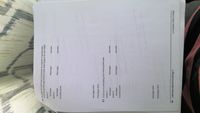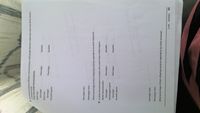
Human Anatomy & Physiology (11th Edition)
11th Edition
ISBN: 9780134580999
Author: Elaine N. Marieb, Katja N. Hoehn
Publisher: PEARSON
expand_more
expand_more
format_list_bulleted
Concept explainers
Topic Video
Question

Transcribed Image Text:I'm unable to transcribe the text directly from the image. However, I can guide you on how to organize such content for an educational website:
---
**Exploring Genetics: Guinea Pig Hair Length**
*In this section, we will explore genetic inheritance using guinea pigs as a model organism. This experiment demonstrates how different traits, such as hair length, are passed from parents to offspring.*
### Short Hair vs. Long Hair in Guinea Pigs
1. **Genetic Background**:
- The allele for short hair is dominant over the allele for long hair.
2. **Experiment 1**:
- **Objective**: Cross two guinea pigs that are both heterozygous for hair length.
- **Parent 1 Genotype**: Indicate here.
- **Parent 2 Genotype**: Indicate here.
3. **Gametes Formation**:
- Parent 1 Gametes: Indicate here.
- Parent 2 Gametes: Indicate here.
4. **Phenotype Prediction**:
- Use a Punnett Square to predict the offspring phenotypes.
5. **Results Interpretation**:
- **Genotype Ratio**: Indicate expected ratio.
- **Phenotype Ratio**: Indicate expected ratio.
### True-Breeding Guinea Pigs
1. **Experiment 2**:
- **Objective**: Cross two true-breeding short-haired guinea pigs.
- **Parent 1 Genotype**: Indicate here.
- **Parent 2 Genotype**: Indicate here.
2. **Gametes Formation**:
- Parent 1 Gametes: Indicate here.
- Parent 2 Gametes: Indicate here.
3. **Phenotype Prediction**:
- Use a Punnett Square to predict the offspring phenotypes.
4. **Results Interpretation**:
- **Genotype Ratio**: Indicate expected ratio.
- **Phenotype Ratio**: Indicate expected ratio.
*For further clarification, refer to the detailed diagrams included in the laboratory manual.*
> **Note**: The exercise and results are designed to help students understand basic genetic principles and practices.
---
For detailed data and analysis, provide access to the full laboratory manual, offering students in-depth resources.

Transcribed Image Text:## Exercise on Plant Genetics and Flower Color Inheritance
### Problem 8
**Scenario**: Some plants produce different colored flowers, with purple flowers as a dominant trait and white flowers as a recessive trait. The exercise involves crossing two white-flowered plants.
- **Plant One**:
- Genotype: __________
- Gametes: __________
- Phenotype: __________
- **Plant Two**:
- Genotype: __________
- Gametes: __________
- Phenotype: __________
- **Punnett Square**: Complete the Punnett square to illustrate the genetic cross.
**Questions**:
- Genotype ratio: __________
- Phenotype ratio: __________
- What percentage of their offspring would be expected to be white-flowered?
### Problem 9
**Scenario**: A white flowered plant is crossed with a plant that is heterozygous.
- **White Flowered Plant**:
- Genotype: __________
- Gametes: __________
- Phenotype: __________
- **Heterozygous Plant**:
- Genotype: __________
- Gametes: __________
- Phenotype: __________
- **Punnett Square**: Complete the Punnett square to illustrate the genetic cross.
**Questions**:
- Genotype ratio: __________
- Phenotype ratio: __________
- What percentage of their offspring would be expected to be white-flowered?
### Notes
- **Dominant Trait**: Purple flowers
- **Recessive Trait**: White flowers
This exercise aims to help students understand Mendelian genetics principles, specifically how dominant and recessive traits are passed from parents to offspring through gametes. The use of Punnett squares will guide students in predicting the genotype and phenotype ratios of offspring.
### Presentation
- Presented as a blank form for students to fill in genotypes, gametes, and phenotypes.
- Students should calculate and fill in the genotype and phenotype ratios after completing the Punnett squares.
- Discussion may focus on understanding and visualizing inheritance patterns, with purple being the dominant trait over white.
Expert Solution
arrow_forward
Step 1
Based on monohybrid cross Mendel proposed law of dominance and law of segregation and based on dihybrid cross he proposed law of independent assortment. These laws are the first scientific basis of inheritance and variations.
Step by stepSolved in 2 steps

Knowledge Booster
Learn more about
Need a deep-dive on the concept behind this application? Look no further. Learn more about this topic, biology and related others by exploring similar questions and additional content below.Similar questions
- 1. The height of a wheat plant is determined by several genes. In a variety the minimum size is 12 inches and the maximum is 24 inches. 12-inch plants were crossed with 18-inch plants, and produced an 18-inch F1. The F1 was allowed to cross each other, and an F2 was obtained in which the 12 and 24 inch plants were obtained with a frequency of 2/8195. How many genes are involved in determining plant size in this variety of wheat? Select one: a. 5b. 6c. 4d. 3arrow_forwardA heterozygous tall yellow plant is crossed with a homozygous short green. What will be the genotypes 3. and phenotypes, and probabilities of the first generation? Genotype of the heterozygous tall, yellow plant Genotype of the homozygous short, green plant Genotypes Phenotypes Right handedness (R) is dominant over left (r) Browyn eves (B) are dominant over blue (b). A man who is blue eyed and right handed, whose father was left handed, married a left handed woman with brown eyes, whose mother was blue eyed. What are the possible phenotypes and genotypes of the offspring and the probability for each? 4. Genotype of the man Genotype of the woman Genotypes Phenotypes What is the probability of getting right handed offspring? What is the probability of getting blue eyed offspring? What is the probability of getting offspring heterozygous for both traits? What is the probability of getting offspring that are homozygous dominant?arrow_forwardStates) B *In nature, individual plants of Plectritis congesta bear either winged or wingless fruits. Three individual plants were collected from nature (thus not necessarily pure breeding) before flow- ering and were either crossed or self-pollinated. The results are shown below. Number of progeny plants Wingless 0 30 80 0 31 Cross 1 2 3 4 TU Parental phenotypes Winged #1 (selfed) Winged #/2 (selfed) Wingless #1 (selfed) Winged #1 X Wingless #1 Winged #2 X Wingless #1 Winged #1 X Winged #2 The fruits of two different forms of Plectritis congesta, the sea blush: Wingless fruit and winged fruit. a) Give a concise genetic hypothesis for the inheritance of fruit shape as determined from these crosses (include the number of genes, number of alleles, and dominance relation- ship between alleles).² b) Give the most probable genotypes of: (define your alleles) 2 Winged #1 Winged #2 Wingless #1 1) 2) c) If you self-pollinate the winged #2 plant and planted six seed, what is the probability of…arrow_forward
- Identify the genotypes of the pea flower plants for each generation P (Guadretieding parents) Phenotypes Purple flowers : Genotypes White flowers 1 2 F1 Gerleyatids) Phenotypes All purple flowers : Genotypes 3 Self- or cross-pollination F2 Generation Phenotypes Purple flowers : Genotypes White flowers 4arrow_forwardA pureline plant of genotype Ab/Ab is crossed to another pureline plant aB/aB. The F1 hybrid is testcrossed. If both genes are closely linked with no crossover, what fraction of the progeny of this testcross will be double homozygous recessive? more than 25% O 0% O 25% less than 25% but higher than 0%arrow_forwardY = yellow, y = green; R = round seed, r = wrinkled seed %3D An individual has the genotype YYRR and has offspring with an individual with the genotype yyrr. If the genes are both expressed with complete dominance, then what phenotype will all the offspring have? Yellow and Wrinkled Yellow and Round Green and Round Green and Wrinkledarrow_forward
- In the tomato, three genes are linked on the same chromosome. Tallis dominant to dwarf, skin that is smooth is dominant to skin that ispeachy, and fruit with a normal rounded tomato shape is dominantto oblate (flattened) shape. A plant that is true-breeding for thedominant traits was crossed to a dwarf plant with peachy skin andoblate fruit. The F1 plants were then testcrossed to dwarf plants withpeachy skin and oblate fruit. The following results were obtained: 151 tall, smooth, normal33 tall, smooth, oblate11 tall, peach, oblate2 tall, peach, normal155 dwarf, peach, oblate29 dwarf, peach, normal12 dwarf, smooth, normal0 dwarf, smooth, oblate A) Determine the coefficient of coincidence and the interference for these three loci.arrow_forwardCalculate the map distances between the genes.arrow_forward1. You are given a female F1 of unknown genotype. You cross the female fly to a homozygous male that has forked bristles and malformed eyes. The offspring of the cross is shown below: (Define symbols for your traits) Phenotype Forked bristles, normal eyes 752 Number Genotype Forked bristles, malformed 56 eyes Malformed eyes, normal bristles Normal eyes, normal bristles 820 64 a. What are the genotypes of the offspring? b. Based on the progeny, what were the genotypes of the F1 parents? What is the distance between for and mal?arrow_forward
arrow_back_ios
arrow_forward_ios
Recommended textbooks for you
 Human Anatomy & Physiology (11th Edition)BiologyISBN:9780134580999Author:Elaine N. Marieb, Katja N. HoehnPublisher:PEARSON
Human Anatomy & Physiology (11th Edition)BiologyISBN:9780134580999Author:Elaine N. Marieb, Katja N. HoehnPublisher:PEARSON Biology 2eBiologyISBN:9781947172517Author:Matthew Douglas, Jung Choi, Mary Ann ClarkPublisher:OpenStax
Biology 2eBiologyISBN:9781947172517Author:Matthew Douglas, Jung Choi, Mary Ann ClarkPublisher:OpenStax Anatomy & PhysiologyBiologyISBN:9781259398629Author:McKinley, Michael P., O'loughlin, Valerie Dean, Bidle, Theresa StouterPublisher:Mcgraw Hill Education,
Anatomy & PhysiologyBiologyISBN:9781259398629Author:McKinley, Michael P., O'loughlin, Valerie Dean, Bidle, Theresa StouterPublisher:Mcgraw Hill Education, Molecular Biology of the Cell (Sixth Edition)BiologyISBN:9780815344322Author:Bruce Alberts, Alexander D. Johnson, Julian Lewis, David Morgan, Martin Raff, Keith Roberts, Peter WalterPublisher:W. W. Norton & Company
Molecular Biology of the Cell (Sixth Edition)BiologyISBN:9780815344322Author:Bruce Alberts, Alexander D. Johnson, Julian Lewis, David Morgan, Martin Raff, Keith Roberts, Peter WalterPublisher:W. W. Norton & Company Laboratory Manual For Human Anatomy & PhysiologyBiologyISBN:9781260159363Author:Martin, Terry R., Prentice-craver, CynthiaPublisher:McGraw-Hill Publishing Co.
Laboratory Manual For Human Anatomy & PhysiologyBiologyISBN:9781260159363Author:Martin, Terry R., Prentice-craver, CynthiaPublisher:McGraw-Hill Publishing Co. Inquiry Into Life (16th Edition)BiologyISBN:9781260231700Author:Sylvia S. Mader, Michael WindelspechtPublisher:McGraw Hill Education
Inquiry Into Life (16th Edition)BiologyISBN:9781260231700Author:Sylvia S. Mader, Michael WindelspechtPublisher:McGraw Hill Education

Human Anatomy & Physiology (11th Edition)
Biology
ISBN:9780134580999
Author:Elaine N. Marieb, Katja N. Hoehn
Publisher:PEARSON

Biology 2e
Biology
ISBN:9781947172517
Author:Matthew Douglas, Jung Choi, Mary Ann Clark
Publisher:OpenStax

Anatomy & Physiology
Biology
ISBN:9781259398629
Author:McKinley, Michael P., O'loughlin, Valerie Dean, Bidle, Theresa Stouter
Publisher:Mcgraw Hill Education,

Molecular Biology of the Cell (Sixth Edition)
Biology
ISBN:9780815344322
Author:Bruce Alberts, Alexander D. Johnson, Julian Lewis, David Morgan, Martin Raff, Keith Roberts, Peter Walter
Publisher:W. W. Norton & Company

Laboratory Manual For Human Anatomy & Physiology
Biology
ISBN:9781260159363
Author:Martin, Terry R., Prentice-craver, Cynthia
Publisher:McGraw-Hill Publishing Co.

Inquiry Into Life (16th Edition)
Biology
ISBN:9781260231700
Author:Sylvia S. Mader, Michael Windelspecht
Publisher:McGraw Hill Education